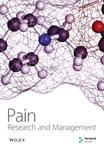Restauration Fonctionnelle du Rachis : Effet du Niveau Initial de Douleur sur Les Performances des Sujets Lombalgiques Chroniques
Abstract
BACKGROUND: Chronic low back pain is a persistent lumbar pain of multifactorial origin. The initial pain level remains poorly used to analyze and compare responses in low back pain patients in a reconditioning program.
OBJECTIVE: To assess and evaluate the responses of subjects with very painful chronic low back pain in a dynamic and intensive care program.
METHODS: A total of 134 patients with chronic low back pain were included in a spine functional restoration program for five weeks. The subjects were classified into two groups by level of pain: a group experiencing severe pain (n=28) and a group experiencing mild to moderate pain (n=106). All subjects received identical support consisting primarily of physiotherapy, occupational therapy, cardiovascular and muscular reconditioning as well as psychological counselling. The physical parameters (flexibility, muscular strength) and psychological (quality of life) were measured before (T0) and after the program (T5sem).
RESULTS: All physical and functional performances of the subjects with severe pain were lower and the impact of back pain on quality of life for these subjects was increased. All significant differences at T0 between the two groups were no longer present at T5sem.
DISCUSSION: Muscular atrophy is more important in subjects with severe pain at T0. The intense pain would cause kinesiophobia and central inhibition in chronic low back pain. The analgesic effects of the spine functional restoration program allowed subjects to obtain similar physical, functional and psychological performances at the end of the five weeks of support.
CONCLUSIONS: Patients with very painful chronic low back pain respond favourably to the dynamic and intensive program. The intensity of low back pain had no effect on responses to the program. The spine functional restoration program enables patients to better manage their pain, whatever its level.




